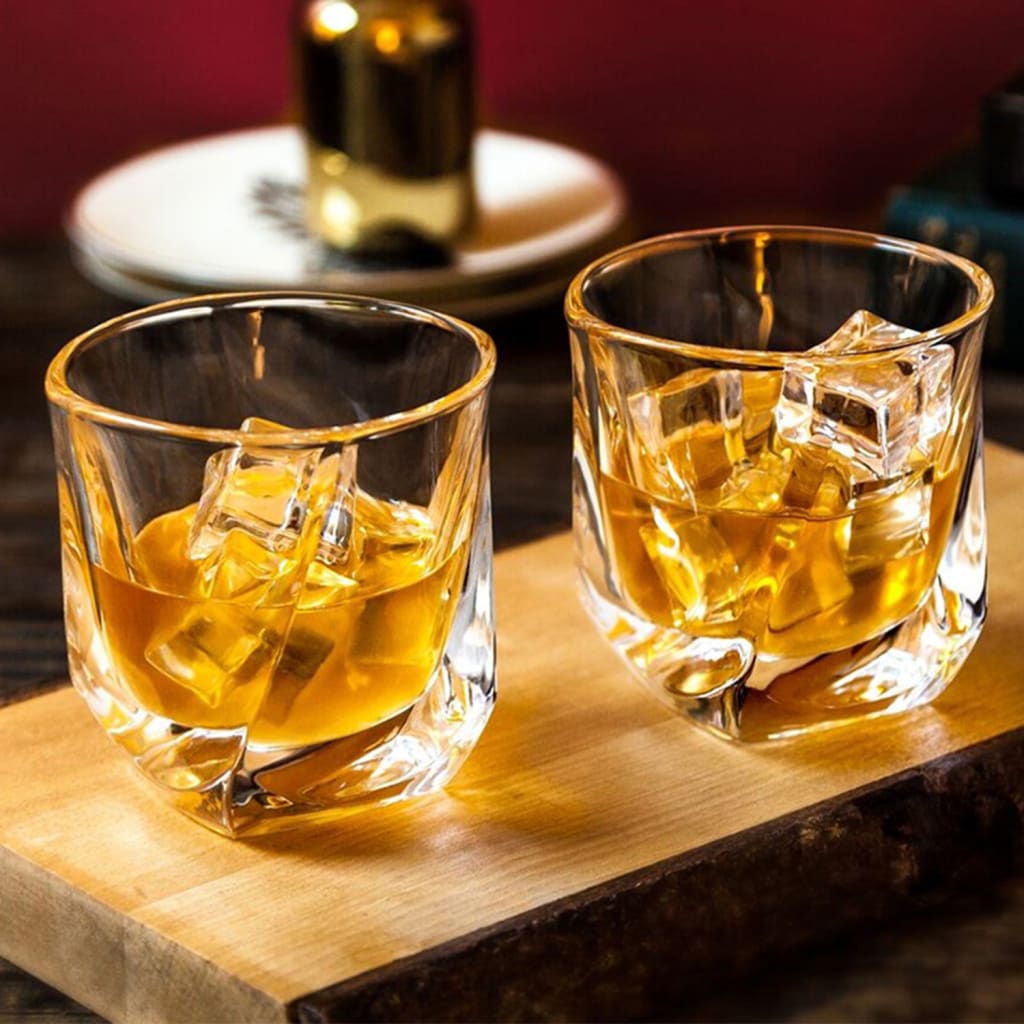Whiskey or Whisky?
A Beginner's Guide to Delving Into the Spirits World

Whiskey, in recent years, has exploded in popularity. This liquid gold spirit has ebbed and flowed in and out of favor over the decades, but few spirits have stood the test of time. While it enjoys considerable favor today, newbies wishing to venture into the charred oak waters often face an intimidating plethora of choices in the liquor store. Constant reviews of which whiskey is the best and what you should drink do little to assuage people's intimidation factors. Even apps like Distiller, where thousands upon thousands of reviews can be found, should only serve as a guidepost to things you may want to try, not necessarily what you find pleasing.
So how does a newbie dip into the dark spirit world?
First, any new adventurer needs to understand two basic things: 1) Whiskey is an acquired taste, and 2) Not all Whiskey is created equally.
Did those two fundamental statements help at all? Probably not, and that's ok. Let's tackle the first statement.
Whiskey is an acquired taste
Do you remember your first taste of alcohol? It may have come when you were a teenager pilfering some of your parents' beer, wine, vodka, gin, or even whiskey. Chances are high that the first taste made your mouth pucker and your face screw up tight as the sheer foulness of the liquid. I know, what a resounding recommendation for drinking, right? It's true; we all were there at one point. Chances were also excellent that the first sip came from some of the cheapest stuff around, but you had to start somewhere.
As your first sip turned into many follow-on sips, you began to acquire a taste for alcohol - similar to anything else, like coffee, vegetables, etc. Many people settle in on easy stuff like beer or wine. Some move onto cocktails, where harder spirits such as whiskey, vodka, tequila, or gin make their appearance known. Cocktails, however, mask the authentic taste and flavor of the elixir, often hiding it behind sugary juices and add-ons.
At this point, the curious drinker may want to know how the raw spirits taste. So they try them and, more often than not, cringe at the heat that comes through the drink without any juice to water it down. Less adventurous drinkers stop right there and revert to their comfort zone. Those that press on experiment and try to understand the complexities in the liquor, for there are many.
The next step to acquiring a taste for whiskey may be to start sipping something on the rocks. But even ordering on the rocks may seem daunting to a newbie. This is where understanding some basic nomenclature helps.
Shot: A 1.5 fluid ounce pour of the selected spirit, typically in a shot glass
A double: Two shots (more if the barkeep is feeling generous)
A finger of whiskey: An older term, one not used as much in the modern era but one some aficionados still use - means the amount of whiskey to fill a glass with a single finger circling the bottom of the glass.
Two (or more) fingers of whiskey: You guessed it, similar to a double, the more fingers, the more whiskey you get in the glass.
On the rocks: A shot or two is usually poured into a rocks glass (round tumbler-like glass) with a large ice sphere in the middle. The water from the ice sphere will dilute the spirit making it easier to drink.
Neat: The preferred way of drinking whiskey. This entails a shot or two poured into a glass (rocks glass or a fancy snifter will do) without any ice to dilute the spirit.
Open it up: Placing a dab or two of water into the whiskey neat to open it open. This is typically done with younger whiskies that need a little help to unfurl their full-flavor palates.
As you progress through your whiskey journey, you may find yourself doing shots, as is often the case with younger adults looking to get drunk fast. Doing shots, especially in rapid succession, does little to help people taste the flavors and complexities of the spirits.
Once shots have grown old, you may order a whiskey on the rocks and take a little more time sipping it. This is an excellent course of action to get to know the whiskey and appreciate the flavor instead of gunning for a quick stupor.
The final step will come with the whiskey neat. At this point, much like a wine drinker, you have noticed some of the different flavors each whiskey possesses - all thanks to the outstanding master distillers that toil endlessly at their craft. And, like wine, you want to be able to detect these flavors on the nose, the palate, and the finish (the swallow). You will be looking for things like oakiness, vanilla, caramel, fruits, nuts, and more. Each whiskey is unique, which brings us to the second point.
Not All Whiskey is Created Equally
Inevitably when you think of whiskey, you immediately go to the holy "J" trio - Jack Daniels, Jim Beam, and Johnnie Walker. It's important to understand that these three, plus their Irish cousin - Jameson- make up many "rail" whiskies. Now, that's not to say that these whiskies are bad; some of them can be very good - hell, Old Blue Eyes himself drank Jack Daniels every day. They should not be the end of your experimentation, though, because, often, they aren't putting the best foot forward in terms of a high-quality spirit. These distillers must put out cheaper, mass-produced spirits to fund some of the longer-aged, higher-quality products.
And this is where the daunting task of finding what you like begins.
Unfortunately, there isn't a magic bullet to figuring all of this out. It's just a simple old trial-and-error that will get you to find what you like. There are some pitfalls a new whiskey drinker should avoid:
Ignoring No-Aged Statement (NAS) whiskey: As you move about the whiskey world, you will see snobs thumb their noses at NAS whiskies, acting as if they are inferior. You need to know that NAS whiskey just means the distiller has decided not to put an age statement on the bottle. This could be because it's a blended whiskey (whiskey taken from multiple batches and barrels), or, frankly, it just isn't any of your business. Many of these whiskies are pretty good and, if blended from multiple barrels, can provide a remarkable cross-section of flavors that can only be achieved by sampling multiple batches.
If it costs more, it must be better: This is, perhaps, the biggest pitfall most whiskey drinkers fall into. Price does not equate to quality or personal preference. A $50 bottle of Eagle Rare or a $30 bottle of Buffalo Trace are highly regarded. Pound for pound, they will stand toe-to-toe with more expensive whiskies (especially craft whiskies) that go for $100 or more. Does that mean you avoid the more expensive offerings? Absolutely not! Try and sample as many different offerings as possible. A great strategy is to sample at whiskey bars where you can control what you are getting into without purchasing a bottle, only to find it abhorrent to your palate. Remember, a $200 shot pour of 21-year-old Pappy Van Winkle may be life-changing, so enjoy it if you can find it (and can afford it).
Whiskey equality doesn't start and end at personal preference, though. It's equally as crucial for a burgeoning connoisseur to understand the different offerings of whiskey (or whisky).
First, is it whiskey or whisky? Well, that will depend on one thing - where the spirit is coming from. Scotland, Japan, and (yes, even) Canada all spell it Whisky, while the US and Ireland spell it Whiskey. Does that mean there's some magical difference? Well, the answer is not as easy as it may seem. So, let's examine the different types of whisk(e)y out there.
American Whiskey: General catch-all for any whiskey made in the US. You may encounter State specific whiskey - such as Tennessee Whiskey, made famous by Jack Daniels. This type of whiskey has been made famous due to its charcoal filtering process.
Rye Whiskey: The first type of whiskey discussed here carries a specific mash bill (a make-up of the corn, wheat, and barley percentages). For a whiskey to be considered a Rye, it must have at least 51% of its mash bill comprised of Rye (pretty simple). The more Rye in the mash bill, the more spice the whiskey will have. Bulleit Rye uses a 95% mash bill and has a beautiful forward spice on the palate. Ryes can also be aged in various barrel types, including former Sherry, Rum, or Wine casks. The reuse of the barrels will add different flavor notes throughout the spirit.
Bourbon Whiskey: The mother of all American whiskies. Often, when people think of American whiskey, they think of bourbon. And, more often than not, they call a famous whiskey a bourbon when it actually isn't. Traditional bourbon has two basic things: At least a 51% corn-based mash bill and aging in a virgin oak barrel. Now, if you ask people from Kentucky if you can get a bourbon made outside of Kentucky, the snobs will say no. This is not true. Bourbon can be made anywhere if it follows the basic distilling rules to call it bourbon. Once upon a time, the concept of bottle-n-bond was a huge priority to ensure the whiskey was distilled legally and could be consumed without killing someone (all that is for another article).
Irish Whiskey: A category made famous by Jameson; however, Jameson isn't the only Irish whiskey. In fact, there are tons of distillers across the Emerald Isle, and many fine offerings can be found. Irish whiskey has a unique triple distill process it must follow. This means the whiskey is distilled three times in three separate stills. The multiple distilling smooths out even the youngest offerings.
Scotch Whisky: Of the categories covered in this article, this is, perhaps, the one that takes the most amount of time to acquire. Scotch has many complexities, but there is something rather unique about Scotch that other whiskies don't have. Though more advanced readers will shout from the rooftops, more than one thing sets Scotch apart from other whiskies; this article will focus on one. Scotch whisky comes from five distinct regions, some overlapping with others which causes further confusion to be ferreted out in a different article. You may hear terms like Speyside, Highland, Islay, etc. For our purposes here, we will ignore those and talk about one rather unique flavorings the distilling methods bring out. Some Scotch doesn't set well with newbies because of a heavy iodine flavor or a taste of "bandaids." It's important to note that this isn't the whisky itself. Others may exclaim and rave about the smokiness of the whisky. All this has to do with something called peat, and it's used in Scotch all over. Different distilleries make various uses of peat, and the outcome can be a dram that makes you think of being near the ocean or sitting back and enjoying a nice cigar. As far as the list of acquired tastes goes, this ranks as the hardest to acquire but is well worth the trial and error to get there.
Whiskey, or Whisky, is a complex spirit that can provide endless hours of enjoyment, getting to understand and appreciate it. No matter where you start on your journey, take your time, slow down, and enjoy all the exit ramps along the liquid gold highway.
About the Creator
Jeff Newman
I am reading and writing enthusiast with a wide variety of interests ranging from history to horror and anything in between. I am a guitarist, self published author, movie buff, travel enthusiast, and cat dad to 13 awesome fur babies.






Comments (1)
This was very informative, and the timing is great. I’ve always loved cooking with whiskey but not always been able to handle it straight. I recently got very into whiskey cocktails. I realized that not all are created equal, and the good ones taste best neat. But there are so many choices it can be overwhelming! Do you have a personal favorite?